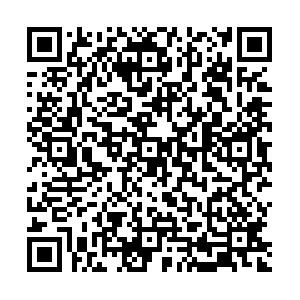-
摘要:
随着业务需求的全球性增长,传统低频波段有限的频谱资源已不能满足低轨(LEO)卫星的业务承载要求,采用Ka频段的LEO星座系统设计成为了主流。然而,采用Ka频段的LEO星座系统不可避免地会对同频段已经存在的静止轨道(GEO)卫星系统产生干扰。首先,通过基于空间隔离的干扰规避方法,采用对LEO与GEO的频谱共用系统设置隔离角来进行上下行场景的干扰消除,使该LEO系统能满足国际电信联盟(ITU)对同频段内通信干扰的约束条件;然后,通过引入GEO带的概念,分析并研究了干扰规避区域的确定方法和其对LEO星座密度的影响。最后,通过仿真得出了干扰隔离角、GEO带与LEO星座密度的关系,得到了在采用隔离角的方式进行干扰避让时满足LEO星座系统业务不中断所需要的最小卫星数量,对LEO星座设计具有一定的指导意义。
Abstract:The increase demand for global services in recent years has led to the deficiency of resources in traditional low frequency band in low earth orbit (LEO) satellite communication. Thus designs of LEO satellite constellation in Ka band have drawn a lot of interests. However, utilization of Ka band in LEO design inevitably causes interference to the existing geostationary (GEO) satellite system in the same band. A method of the discrimination angle based on spatial isolation in LEO-GEO coexistence systems is adopted to mitigate the interference both in uplink and downlink scenarios and to guarantee that the interference level from LEO system can meet the constraint requirements of communication interference in the same frequency band which are stipulated by International Telecommunication Union (ITU). Furthermore, a concept of GEO band is developed to determine the interference exclusion zone and to research the impact on the LEO satellite constellation density. Finally, simulations of the relationship among the discrimination angle, the GEO band and the LEO constellation density are given and the minimum satellite amount in this method without interrupting satellite services is found, which is significant in LEO satellite constellation design.
-
表 1 仿真参数
Table 1. Simulation parameters
参数 数值 LEO轨道高度/km 850 GEO轨道高度/km 35 786 地球半径/km 6 371 地面站最小仰角/(°) 10 轨道倾角/(°) 87 发射功率/dBw 0 载波带宽/MHz 54 上行频率/GHz 28 下行频率/GHz 18.2 LEO地面站天线口径/m 1.2 GEO地面站天线口径/m 1 LEO卫星天线口径/m 0.4 GEO卫星天线口径/m 3a 地面站天线增益 见文献[17] LEO卫星天线增益 见文献[18] GEO卫星天线增益 见文献[16] 地面站密度/(°) 1b 注:a.上行EPFD值对2~4区间的变化不敏感; b.设沿纬度线均匀分布,在赤道线上地面站间隔经度值为1°。 -
[1] VATALARO F, CORAZZA G, CAINI C, et al.Analysis of LEO, MEO, and GEO global mobile satellite systems in the presence of interference and fading[J].IEEE Journal on Selected Areas in Communication, 1995, 13(2):291-300. doi: 10.1109/49.345873 [2] SHARMA S K, CHATZINOTAS S, OTTERSTEN B.In-line interference mitigation techniques for spectral coexistence of GEO and NGEO satellites[J].International Journal of Satellite Communications and Networking, 2016, 34(1):11-39. doi: 10.1002/sat.1090 [3] PRATT S R, RAINES R A, FOSSA C E.et al.An operational and performance overview of the IRIDIUM low earth orbit satellite system[J].IEEE Communications Surveys, Second Quarter 1999, 2(2):2-10. http://cn.bing.com/academic/profile?id=eb3989d239c598a6707af33282c6d0b4&encoded=0&v=paper_preview&mkt=zh-cn [4] ITU Radiocommunication (ITU-R).Radio Regulations Articles Edition of 2012[S].Geneva: ITU, 2012: 271-289. [5] ITU Radiocommunication (ITU-R).Analytical method for estimating interference between non-geostationary mobile-satellite feeder links and geostationary fixed-satellite networks operating co-frequency and codirectionally[S].Geneva: ITU, 1997: 2-3. [6] SHARMA S K, CHATZINOTAS S, OTTERSTEN B.Transmit beamforming for spectral coexistence of satellite and terrestrial networks[C]//20138th International Conference on Cognitive Radio Oriented Wireless Networks.Piscataway, NJ: IEEE Press, 2013: 275-281. [7] ZHENG Y, SUN S, BO R, et al.Traffic aware power allocation and frequency reuse for green LTE-A heterogeneous networks[C]//2015 IEEE International Conference on Communications (ICC). Piscataway, NJ: IEEE Press, 2015: 3167-3172. [8] SHARMA S K, CHATZINOTAS S, OTTERSTEN B.Cognitive radio techniques for satellite communication systems[C]//2013 IEEE 78th Vehicular Technology Conference(VTC Fall). Piscataway, NJ: IEEE Press, 2013: 1-5. [9] REED A G, POSEN M C J.Interference in the fixed satellite service bands between the feeder-links of networks using non-geostationary satellites and network using geostationary satellites[C]//3rd European Conference on Satellite Communications ECSC3, 1993. Manchester: IET, 1993: 251-256. [10] WANG A W.Method and apparatus for providing wideband services using medium and low earth orbit satellites: US6678520[P].2014-01-23. [11] ITU Radiocommunication(ITU-R).Simulation methodologies for determining statistics of short-term interference between co-frequency, codirectional non-geostationary-satellite orbit fixed-satellite service systems in circular orbits and other non-geostationary fixed-satellite service systems in circular orbits or geostationary-satellite orbit fixed-satellite service networks[S].Geneva: ITU, 2003: 3-5. [12] ITU Radiocommunication(ITU-R).Interference mitigation techniques to facilitate coordination between non-geostationary-satellite orbit mobile-satellite service feeder links and geostationary-satellite orbit fixed-satellite service networks in the bands 19.3-19.7 GHz and 29.1-29.5 GHz[S].Geneva: ITU, 1999: 2. [13] ITU Radiocommunication(ITU-R).Analytical method to calculate short-term visibility and interference statistics for non-geostationary satellite orbit satellites as seen from a point on the earth's surface[S].Geneva: ITU, 2002: 2-3. [14] 晓春.OneWeb太空互联网低轨星座的新进展[J].卫星应用, 2016(6):75-77. http://d.old.wanfangdata.com.cn/Periodical/wxyy201606019XIAO C.New Progress of OneWeb LEO satellite constellation in space internet[J].Satellite Application, 2016(6):75-77(in Chinese). http://d.old.wanfangdata.com.cn/Periodical/wxyy201606019 [15] ITU Radiocommunication(ITU-R).Static methodology for calculating epfd↓ to facilitate coordination of very large antennas under Nos. 9.7A and 9.7B of the radio regulations[S].Geneva: ITU, 2005: 2-4. [16] ITU Radiocommunication(ITU-R).Satellite antenna radiation pattern for use as a design objective in the fixed-satellite service employing geostationary satellites[S].Geneva: ITU, 1997: 2-5. [17] 国际电联无线电通信全会.用于在10.7 GHz和30 GHz之间的频段内涉及非GSO卫星的平共处干扰评估的参考FSS地球站的辐射方向图[S].日内瓦: 国际电联无线电通信全会, 2001: 2-3.ITU Radiocommunication(ITU-R).Reference FSS earth-station radiation patterns for use in interference assessment involving non-GSO satellites in frequency bands between 10.7 GHz and 30 GHz[S].Geneva: ITU, 2001: 2-3(in Chinese). [18] ITU Radiocommunication(ITU-R).Satellite antenna radiation patterns for non-geostationary orbit satellite antennas operating in the fixed-satellite service below 30 GHz[S].Geneva: ITU, 2001: 2-4. -







 下载:
下载:

















